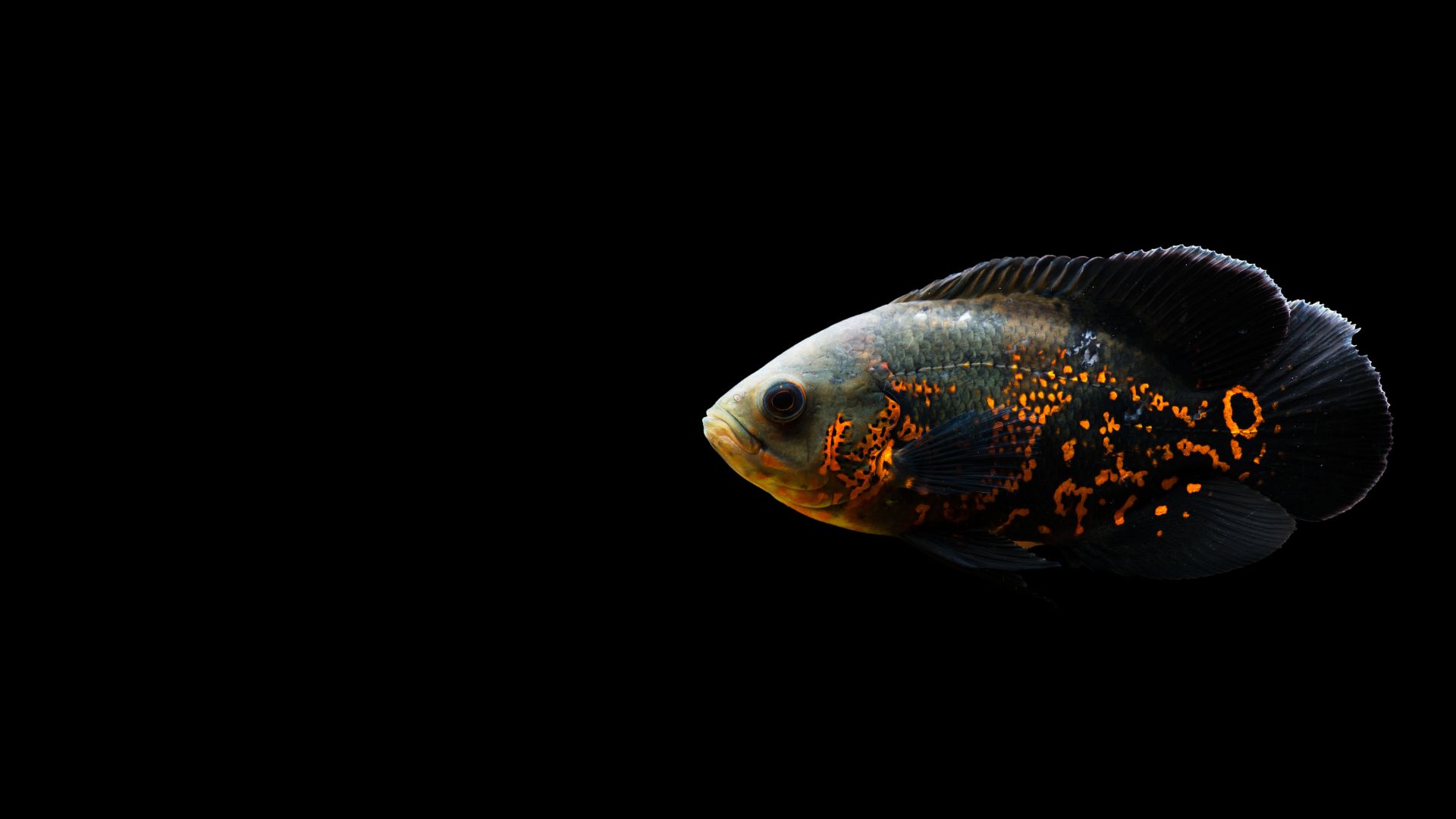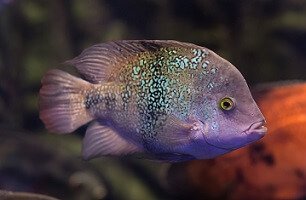
Oscar Fish
Scientific name: Astronotus ocellatus
The Oscar Fish, also known as the Velvet Cichlid or Marble Cichlid, is a large and intelligent freshwater fish native to the slow-moving rivers and floodplains of the Amazon Basin in South America.
Renowned for their striking colors and patterns, as well as their engaging personalities, Oscar Fish are a favorite among aquarists who have the space and resources to care for them properly. They exhibit a range of colors including black, red, orange, and albino, often with intricate patterns that add to their visual appeal.
IUCN Red List of Threatened Species : Not Evaluated
Oscar Fish are known for their territorial and sometimes aggressive behavior, especially as they mature. They require large aquariums with robust filtration systems due to their size and the amount of waste they produce. Providing hiding spots with rocks, driftwood, and sturdy plants (although they may uproot plants) can help simulate their natural environment. They are intelligent and can become bored in barren tanks, so environmental enrichment is beneficial.
They are omnivorous with a preference for meaty foods. A varied diet including high-quality pellets formulated for cichlids, supplemented with live or frozen foods like shrimp, worms, and insects, is essential for their health and coloration.

Navite Location
South America (Amazon River Basin in Brazil, Peru, Colombia, and surrounding regions)
Varieties
Tiger / Red / Albino / Lemon / Black / Veil Tail / Wild
Suggested Tank Mates
Large South American Cichlids (Severums, Jack Dempseys) / Silver Dollars / Plecostomus (Common Pleco) / Bichirs / Firemouth Cichlids
Tank Mates to Avoid
Small fish that can be seen as food (tetras, guppies) / Highly aggressive species / Delicate or slow-moving fish / Fin-nippers
Diet
High-quality cichlid pellets / Live or frozen foods (shrimp, earthworms, mealworms, crickets) / Occasional fruits and vegetables (peas, zucchini) / Avoid feeder fish due to disease risk
Breeding
Breeding Oscar Fish can be challenging due to their territorial nature and the need for a large tank. They are monogamous and form pairs. Spawning usually occurs on flat surfaces like rocks or slate.
Lifespan
Up to 10–15 years with proper care
Size
Up to 35 cm (14 inches) in length
Minimum Tank Size
75 gallons (284 liters) for a single adult; add 50 gallons (189 liters) for each additional Oscar
Optimum Tank Temperature
22°C to 28°C (72°F to 82°F)
Ideal pH Level
6.0 to 7.5
Water Hardness
5 – 20 dGH (soft to moderately hard water)
Common Health Issues
Hole-in-the-Head Disease (Hexamitiasis) / Ich (White Spot Disease) / Fin Rot / Parasitic Infections / Obesity due to overfeeding / Stress-related illnesses due to poor water quality or inadequate tank conditions
Interesting facts
Intelligence
Oscar Fish are considered one of the most intelligent aquarium fish. They can recognize their owners and can be trained to perform simple tricks or accept food from your hand.
Color Changes
They can change color slightly based on mood, health, and environmental conditions, which can be a form of communication.
Growth Rate
Oscars have a rapid growth rate and can reach up to 25 cm (10 inches) within a year if properly cared for.
Environmental Interaction
They are known to rearrange their tank environment, often moving objects and uprooting plants.
Vocalization
Oscars can produce audible grunts or croaks, especially during feeding or territorial displays.
Oscar Fish FAQ’s
Can Oscar Fish Live in a Community Tank?
Oscar Fish are best kept either alone or with other large, compatible fish due to their territorial and aggressive tendencies. If kept in a community tank, it should be spacious enough to reduce territorial disputes, and tank mates should be robust and similarly sized to avoid being bullied or eaten.
How Fast Do Oscar Fish Grow?
Oscar Fish grow rapidly, especially in their first year. They can grow up to 25 cm (10 inches) within 12 months if provided with adequate space and proper nutrition. This rapid growth necessitates a large tank from the outset.
Can You Keep Multiple Oscars Together?
Keeping multiple Oscars together is possible but requires a very large tank (at least 125 gallons or more) to provide enough space and reduce territorial aggression. Introducing them as juveniles and ensuring they have enough room to establish territories can improve compatibility.
